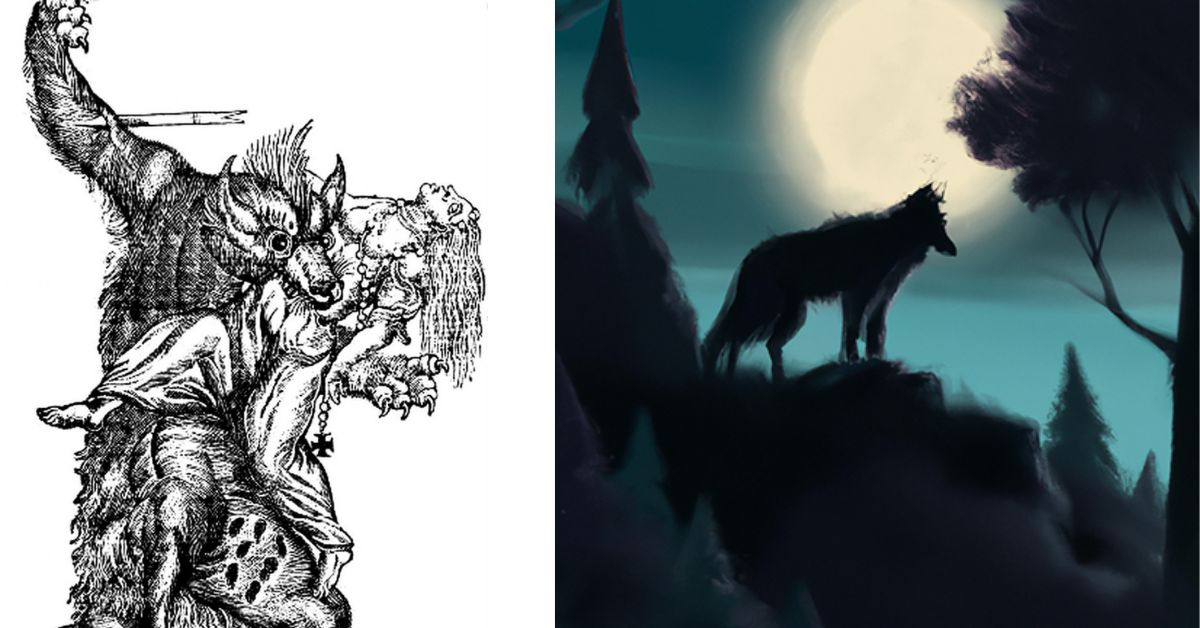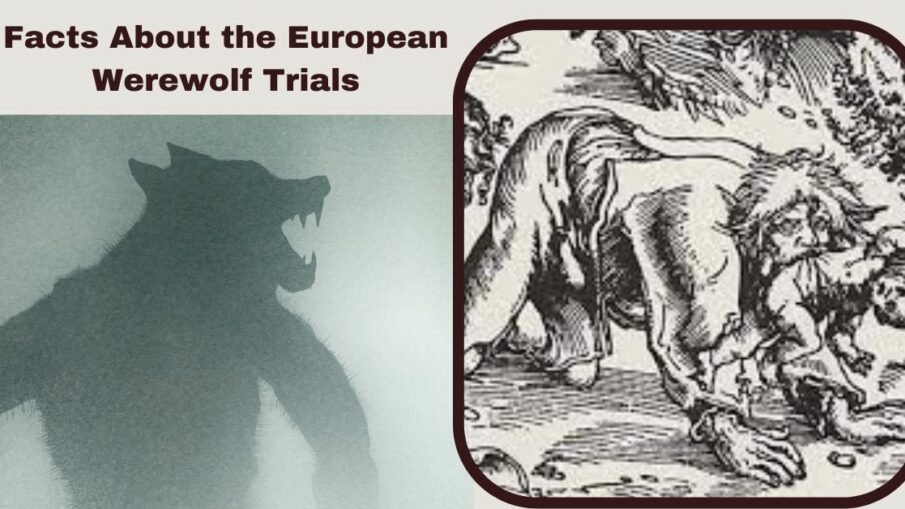Werewolf stories have been around since antiquity. The word “lycanthropy,” which refers to the phenomenon of a human taking on the characteristics of a wolf, comes from the name of the legendary King Lycaon in Greek mythology. It’s not good to be a werewolf in many stories.
In many stories, like the one about King Lycaon, it serves as a kind of retribution. However, between the 1400s and the 1700s, individuals in Europe felt it was appropriate, for a variety of reasons, to worsen the situation of suspected werewolves by tracking them down, putting them on trial, and harshly killing them.
From the origins of werewolf myths to the senseless nature of the killings, the trials and ideas surrounding werewolves throughout this time are both interesting and unsettling. These ten facts about werewolf trials are frightful and outrageous.
1. They Only Happened Where Real Wolves Roamed
In European stories of the change of humans into animals, no other animal has had the same impact as the wolf. According to some scholars, this is because wolves were the most common land predator that could actually threaten people on the continent for thousands of years.

A comparison of the frequency of werewolf trials in Europe and England with forested areas like France and Germany lends credence to this. By the end of the fifteenth century, relentless hunting had driven wolves from England. Thus, there were no recorded trials there.
Additionally, there were no trials in the European Mediterranean regions where wolves were non-existent. In Germany, there were more than 300 cases, which appears high compared to none at all. Nevertheless, it pales in comparison to the 30,000–45,000 witchcraft convictions throughout the same time span.
2. The Charges Were Nearly Impossible to Defend
Early societies had nothing more than their imaginations to help explain unexpected conditions in the absence of contemporary scientific methods. For instance, the explanation of trance and catalepsy was that the individual’s spirit had left their body.
This created issues in court because the accused’s spirit might have easily departed their body to carry out its evil plans, negating the possibility of any alibi. Claims of werewolves and witches were also targeted by the debate.
Because even medical professionals thought it was plausible for the Devil to have caused the disease, a defense based on mental illness was frequently ineffective. Perhaps it was fortunate that fewer were carried out using this kind of reasoning as a defense.
3. They Caught Some Actual Serial Killers
Actually, the entire effort may have started out as an attempt to explain serial killers or the atrocities that mercenaries and marauders committed but never got around to solving. Between excursions, there were rumors that the wild warriors known as Scandinavian Berserkers, who loved nothing more than to massacre and loot their way across Europe, sometimes couldn’t resist the urge to slaughter while they were at home.
They would wrap themselves in wolf and bear hides and indulge in a night of wanton devastation and killing, a phenomenon known as “Berserker wrath.” Serial killers were undoubtedly active throughout the werewolf trials, however, they were less well-known and just as dangerous.
Children’s bones were discovered at the home of a French tailor who had been burned alive in 1598 for being a werewolf. An unsuccessful attack on a small girl led to the capture of adolescent cannibal Jean Grenier.
We still lack reasons for such inhumane behavior, and lycanthropy was considered a viable theory in early modern society. Grenier claimed to have sincerely believed that he had made a deal with the devil to turn into a werewolf.
4. Christianity Turned Werewolves Evil
When exactly lycanthropy turned wicked is one of the most challenging questions about the history of the werewolf trials. Earlier Nordic legends saw wolf-like qualities as desirable. On their adventures, brave warriors exploited them to their advantage.
In other instances, it was a curse, and people who were afflicted were deserving of compassion. It was also not always considered wicked in ancient societies to shift into a beast. What then altered in the fifteenth century? One interpretation holds that Christianity has a history of corrupting and appropriating elements of pagan beliefs.
For instance, the Greek god Pan is the inspiration behind depictions of the devil as faun-like. It became thought that the ability to change into a wolf must have been given by the Devil and, as a result, must be punished when werewolf legend and Christian theology collided.
Other scholars, however, have drawn attention to the fact that this is not entirely consistent with Christian doctrine, which holds that only God is powerful enough to change matter and that he would not turn anything made in his likeness into a soulless beast.
Please click on the following link if you are interested in learning more information about the natural world:
- 15 Fascinating Facts About Feigefossen: Norway’s Natural Wonder
- 14 Fascinating Facts About Garden Creek Falls
- 11 Fascinating Facts About Geroldsauer Wasserfall
5. Most People Did Not Believe in Literal Werewolves
Because of the aforementioned theological reasoning and the church’s significant influence at the time, the majority of people did not think that men could physically change into wolves. The prosecution stated that illusions created by the Devil or demons were the source of the werewolf phenomena.
The trials’ detractors accused them of having delusions. Since ancient Greece, people have recognized the possibility that certain werewolf confessions and observed wolf-like behavior are due to the belief that they were or were once werewolves.
Unfortunately for the accused, this also made the prosecution’s case stronger, and at the moment, a deal with the Devil appeared equally likely. An in-between explanation was found in certain situations, one that was neither entirely demonic nor entirely medical.
6. There Were Medical Witnesses
Doctors were frequently called as expert witnesses in werewolf and witchcraft trials. One of their main responsibilities was to demonstrate their true lunacy. In certain instances, like the case of Jean Grenier, a self-confessed werewolf and teenage child killer, medical evaluations were successful in sparing the defendant from execution.
Medical professionals also needed to confirm that the accused women were not expecting. When they were, they were usually not executed or subjected to torture. In other instances, doctors might have assisted in a conviction. Examining the defendant and looking for indications of touch with the Devil or witch’s marks was part of their job description.
7. Drugs Could Have Been to Blame
Some opponents of the werewolf trials thought that the populace may have been experiencing hallucinations as a result of witches’ ointments. Unfortunately for the accused, this idea had little support until the 1960s, when chemical studies showed that LSD and the toxic fungus ergot were identical to elements in witches’ ointments.
Some of the werewolf sightings could be explained by contact with the ointment and ergot poisonings. Other contemporary academics, however, have critiqued this theory for oversimplifying the circumstances.
Unfortunately, the exact reason for the accused’s actions and the witnesses’ observations remains a mystery to this day. As alternate possibilities, other contemporary scholars have proposed neurological malfunction, epilepsy, and even rabies.
8. They Picked on the Poor and Marginalized
Historians of the modern era have noted parallels between the unlucky individuals charged in werewolf trials. Naturally, most of them were men. This was not always the case, as many people thought that lycanthropy was a form of witchcraft.
But werewolf strength and aggression are characteristics more closely linked to men. Some experts have labeled their hairy and fierce appearance as excessively masculine. The accused were frequently farmers, shepherds, beggars, peasants, and other social outcasts.
Since beggars were already seen as criminals, it was common for them to face further charges. The stench and filth of shepherds’ and farmers’ jobs led to their stigmatization, with persons who performed them thought to have traits in common with animals.
9. No Full Moon Required
Early contemporary werewolf folklore did not describe transformations occurring during a full moon. Nonetheless, they involved a magical object that the Devil had given to them that had the ability to change a person at any moment.
Belts and wolf pelts were common commodities. However, the church denied the idea that people could physically change into wolves, therefore it was also said that salves and mystical ointments that could knock people out or put them to sleep were utilized.
These allegedly made it possible for the Devil to take over the person’s body and carry out a variety of horrible deeds while disguising himself as a wolf. This theory’s 16th-century proponent, Henri Boguet, felt that even though the offender had already rejected God, they were still accountable because whatever crimes they committed were something they wanted to do.
10. Executions Were Brutal
The most well-known werewolf execution is perhaps the one involving a German by the name of Peter Stumpp. Some publications, however, refer to him as Stumpf and Stubbe. The accused professed to have killed sixteen people, twelve of whom were minors and his own son.
He acknowledged his lycanthropy, these crimes, and his relationships with both a demon in the shape of a stunning lady and his own daughter. The fact that torture was used to get the admissions did not lessen the severity of his harsh punishment.
A large audience watched on October 31, 1589, as Stumpp was fastened to a wheel to have his skin and bones broken. The decapitation came just after the skinning. He put his head on display in the middle of the village to let the other werewolves know what was coming. He had his body burned to ensure he would not return.
Stay tuned with us on Thegeofacts.com for more amazing updates.


Leave a Reply